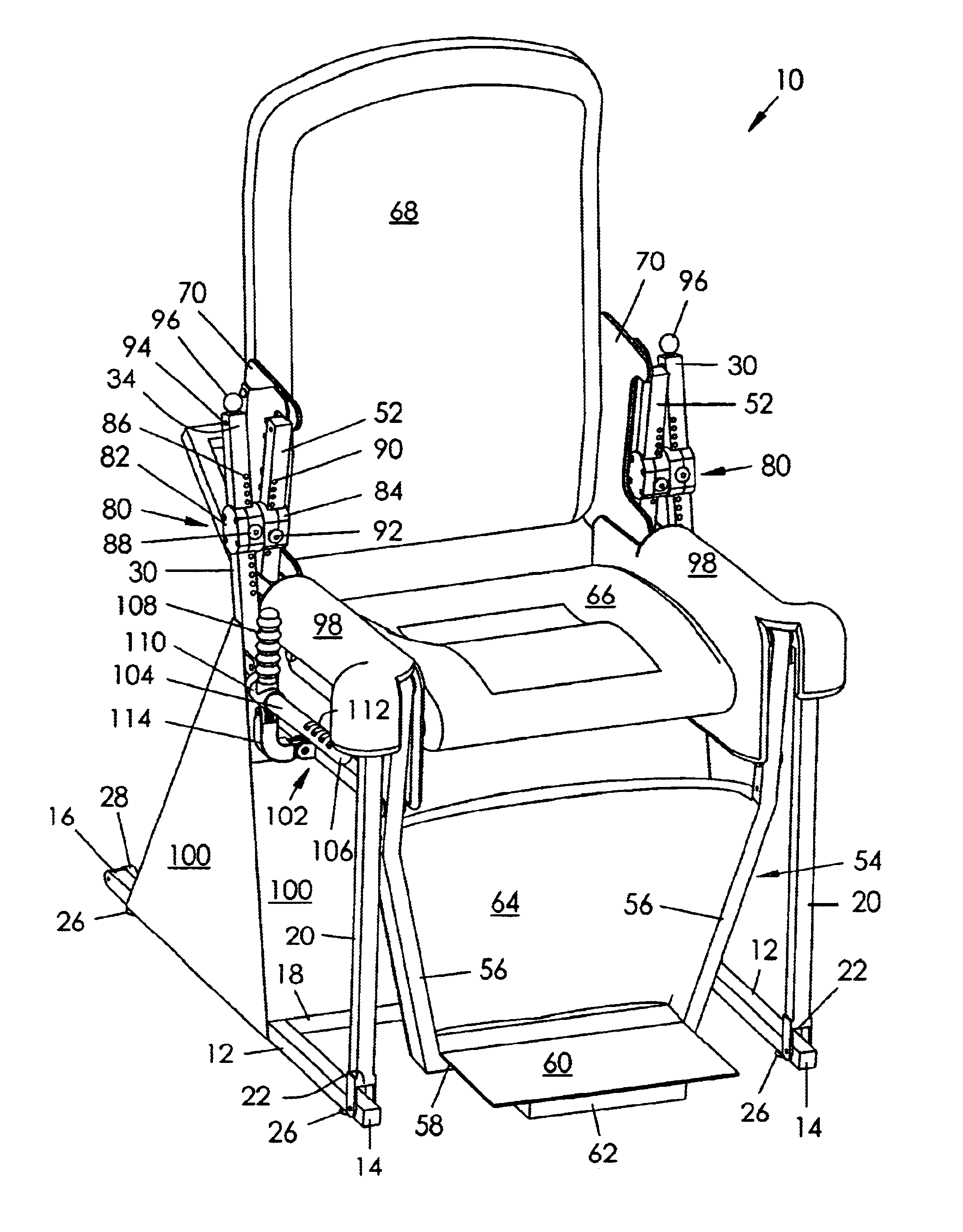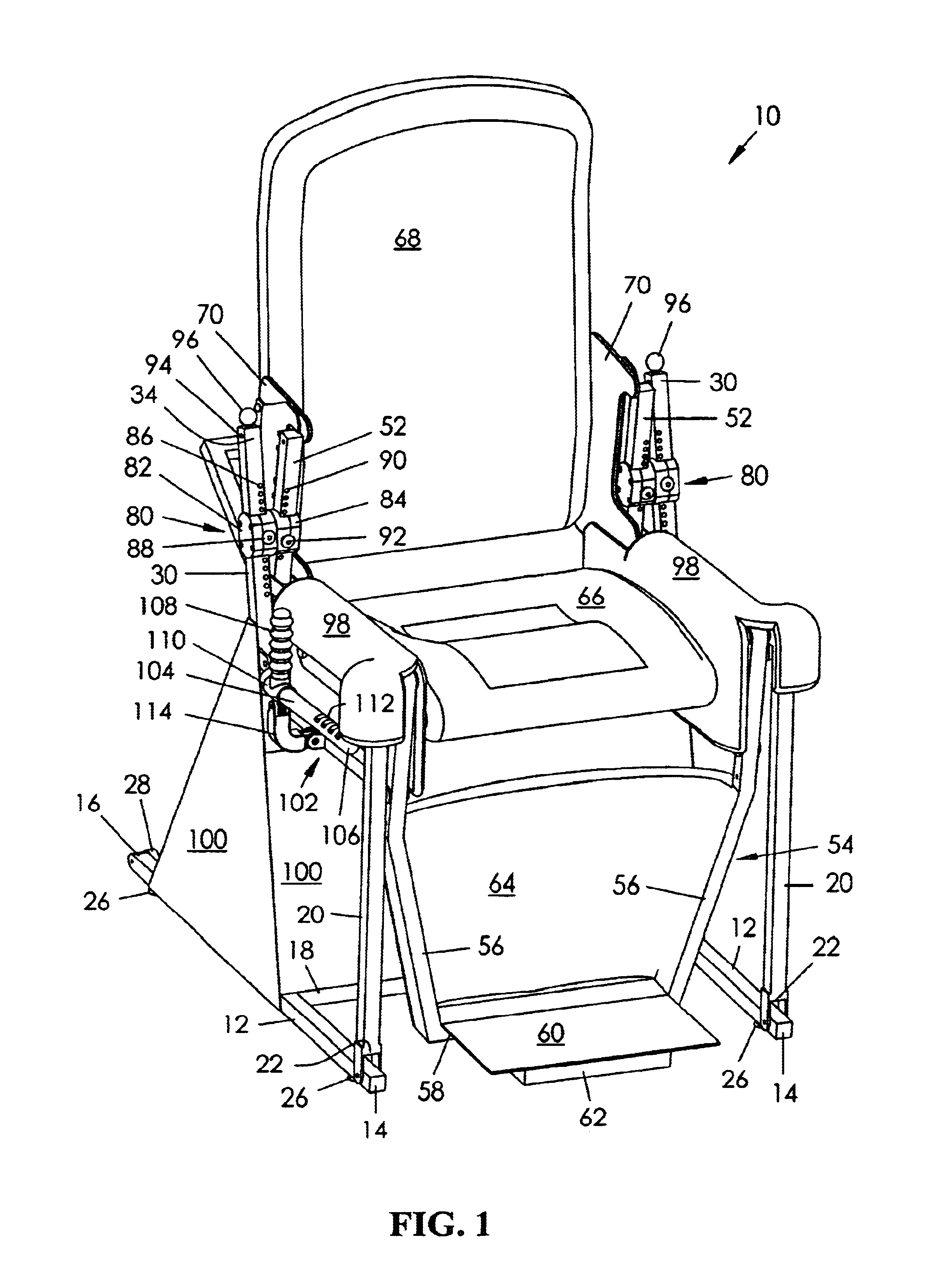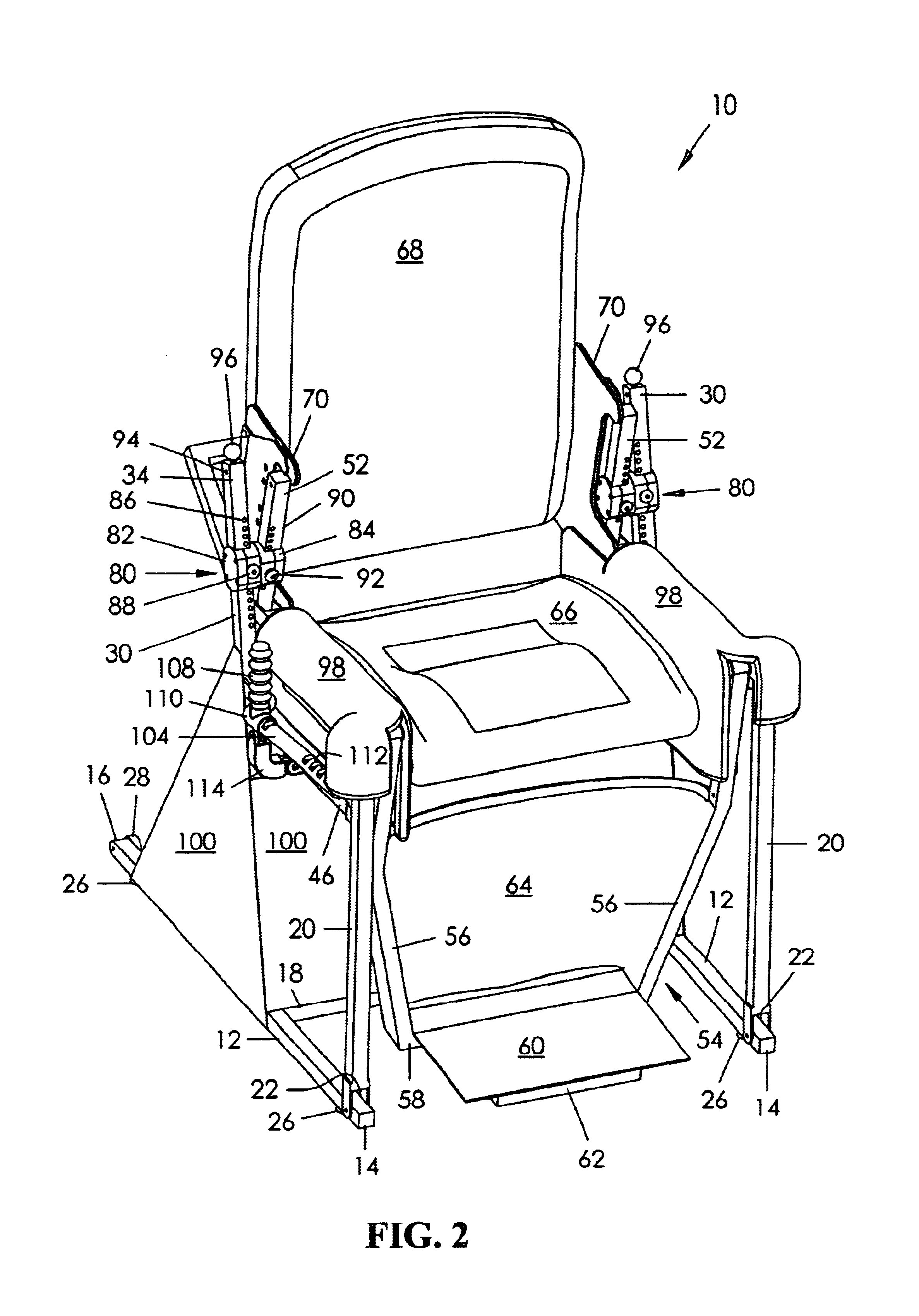Low-resistance exercise and rehabilitation chair
a low-resistance exercise and rehabilitation chair technology, applied in the field of low-resistance exercise and rehabilitation chairs, can solve the problem of user reducing resistance during operation, and achieve the effect of facilitating operation
- Summary
- Abstract
- Description
- Claims
- Application Information
AI Technical Summary
Benefits of technology
Problems solved by technology
Method used
Image
Examples
embodiment 120
Another embodiment 120 of the present invention is shown in FIGS. 5 through 7 and includes a construction substantially similar to the construction described above except as specifically noted below. In this embodiment, a first jackscrew assembly is associated with each upstanding support arm 52 and is operated by a first motor 122. A second jackscrew assembly is associated with each rear leg 30 and is operated by a second motor 130. Operation of the jackscrew assemblies adjusts the fulcrum about which the seat assembly rotates. More particularly, each first jackscrew assembly includes a first gear 124 rotatably coupled to a respective support arm 52. Each of the first gears 124 is coupled to the first motor 122 with a first belt 129. Within a respective support arm 52, a respective first gear 124 meshes with a first jackscrew 126 which extends longitudinally therein, an operation of a first gear 124 causing the first jackscrew 126 to rotate about a longitudinal axis. Consequently, ...
PUM
 Login to View More
Login to View More Abstract
Description
Claims
Application Information
 Login to View More
Login to View More - R&D
- Intellectual Property
- Life Sciences
- Materials
- Tech Scout
- Unparalleled Data Quality
- Higher Quality Content
- 60% Fewer Hallucinations
Browse by: Latest US Patents, China's latest patents, Technical Efficacy Thesaurus, Application Domain, Technology Topic, Popular Technical Reports.
© 2025 PatSnap. All rights reserved.Legal|Privacy policy|Modern Slavery Act Transparency Statement|Sitemap|About US| Contact US: help@patsnap.com



